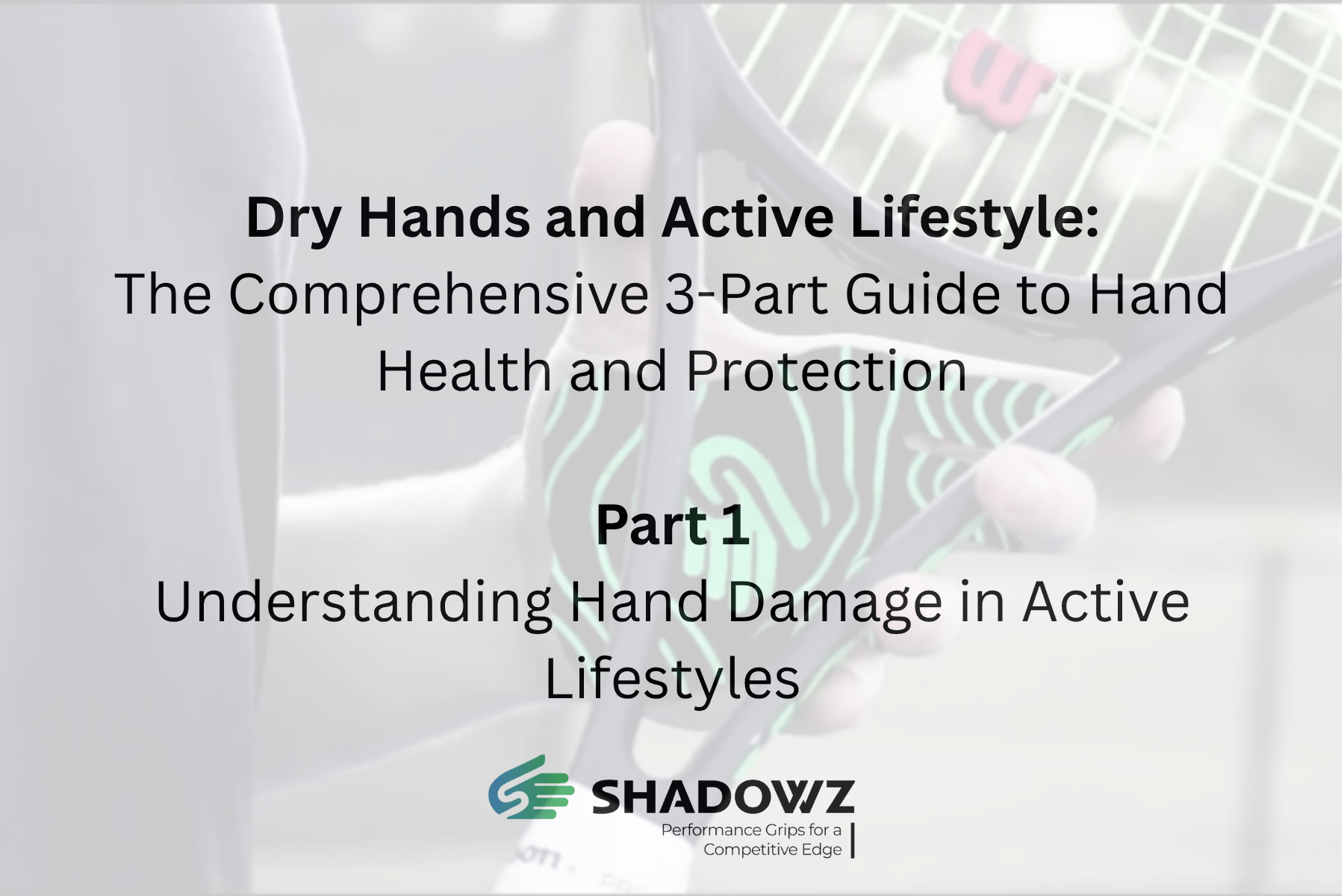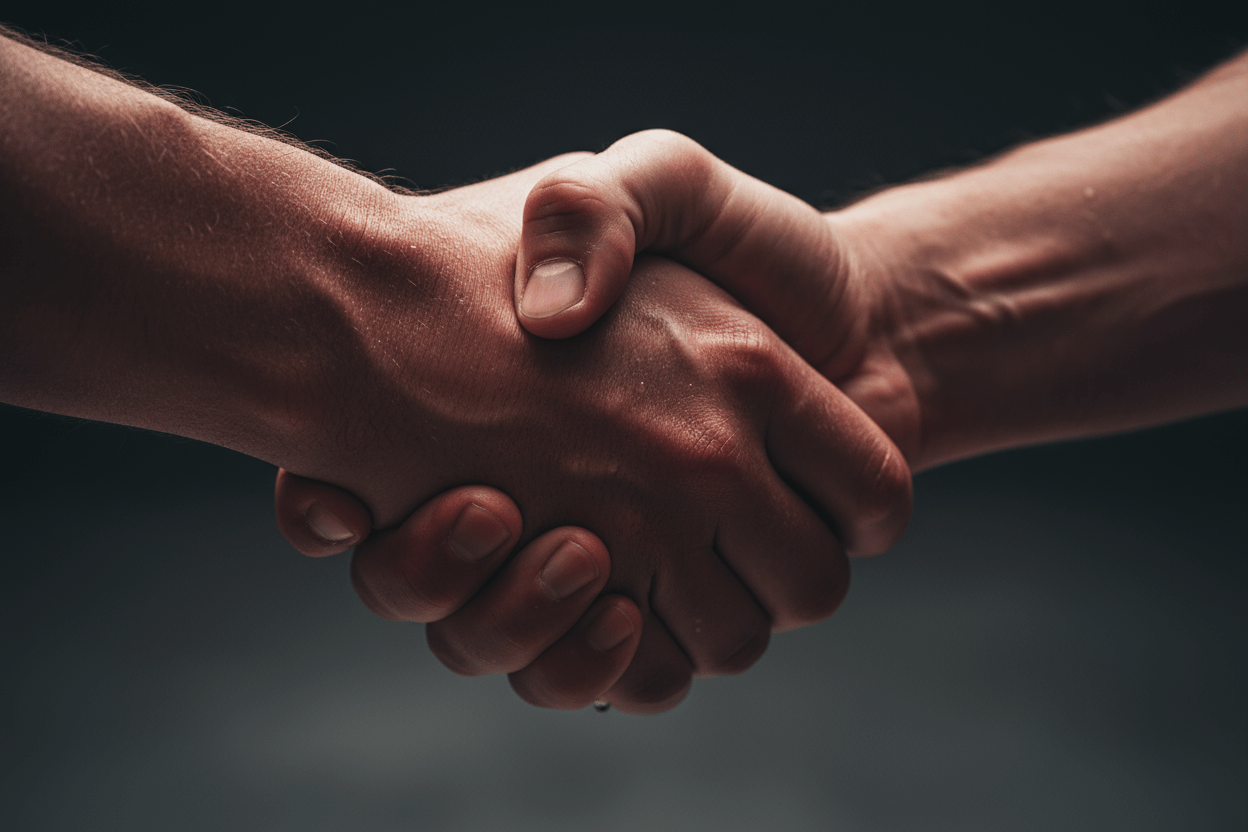This is Part 1 of a 3-part series on protecting your hands during active pursuits. Part 2 will cover prevention strategies and protection tools, while Part 3 focuses on recovery and long-term hand care.
For fitness enthusiasts, athletes, and active individuals, dry, cracked hands are often viewed as an inevitable badge of honor. However, this mindset overlooks a crucial truth: damaged hands limit performance, increase injury risk, and create unnecessary discomfort that can derail your fitness journey.
The challenge isn't just cosmetic. Dry, torn hands compromise grip strength, reduce tactile feedback, and create entry points for bacteria and infections. Understanding how to maintain healthy hands while pursuing an active lifestyle requires both preventive strategies and the right protective tools—but first, we need to understand exactly what's happening to our hands during exercise.
The Science Behind Exercise-Induced Hand Damage
When we engage in activities like weightlifting, rock climbing, gymnastics, or CrossFit, our hands face a perfect storm of damaging conditions. Understanding these mechanisms is the first step toward effective prevention.
Friction and Pressure: The Primary Culprits
Repetitive gripping creates mechanical stress that breaks down the skin's protective barrier. The constant rubbing motion literally grinds away the outer layer of skin, especially on the palms and fingertips. This isn't just surface damage—the deeper layers of skin become compromised, leading to the formation of calluses as the body attempts to protect itself.
The areas most affected are predictable based on grip patterns:
- Upper palm: Where barbells and dumbbells rest during lifting
- Finger pads: Primary contact points for climbing holds and pull-up bars
- Base of fingers: Where handles create pressure during rowing or kettlebell movements
- Thumb web: Often overlooked but heavily stressed during gripping activities
Moisture Loss: Your Skin's Silent Enemy
Physical activity increases core body temperature, leading to increased blood flow to extremities and subsequent moisture evaporation from the skin. This natural cooling mechanism leaves hands particularly vulnerable to drying out.
The process becomes cyclical: as skin loses moisture, it becomes less flexible and more prone to cracking. These micro-cracks then allow even more moisture to escape, creating a downward spiral of skin health. Environmental factors like air conditioning in gyms, outdoor activities in wind and sun, and frequent hand washing all contribute to moisture depletion.
Chemical Exposure: The Hidden Damage
Gym chalk (magnesium carbonate), while excellent for grip enhancement, is highly alkaline and draws moisture from the skin. Regular chalk use without proper hand care can lead to chronically dry, cracked hands.
The alkaline nature of chalk doesn't just remove surface moisture—it actually disrupts the skin's natural pH balance. Healthy skin maintains a slightly acidic pH (around 5.5), which helps maintain the skin barrier and prevent bacterial growth. Chalk use can push skin pH as high as 8.0, compromising these natural protective mechanisms.
The Hidden Costs of Damaged Hands
The impact of compromised hand health extends far beyond appearance. Research on sports dermatology and athletic performance reveals that athletes with compromised hand skin experience:
- Significant reduction in grip endurance and performance capacity
- Decreased fine motor control and tactile feedback
- Higher likelihood of grip-related injuries and skin tears
- Significantly longer recovery times between training sessions
Performance Implications
When hands are damaged, the body's natural response is protective—grip strength decreases to prevent further injury. This creates a cascade of performance issues:
Reduced Training Volume: Athletes with hand problems typically reduce training frequency or intensity to allow healing, disrupting progress toward fitness goals.
Compensatory Movement Patterns: When grip strength is compromised, other muscle groups must work harder to maintain performance, potentially leading to overuse injuries elsewhere.
Mental Performance Barriers: The constant awareness of hand discomfort can reduce focus and confidence during challenging movements.
The Gender Factor
For women especially, torn and callused hands often create a psychological barrier to maintaining an active lifestyle. The conflict between wanting strong, capable hands for performance and maintaining soft, feminine hands for professional and personal presentation creates unnecessary stress.
This psychological component is real and valid. Studies show that appearance-related concerns are one of the top three reasons women discontinue strength training programs, even when they're seeing positive results in other areas.
Understanding Your Hand's Anatomy
To effectively protect your hands, it's helpful to understand their structure and how different activities stress different areas.
Skin Layers and Function
Epidermis: The outermost layer provides barrier protection. This is where visible damage like calluses and cracks occur.
Dermis: Contains nerve endings, blood vessels, and sweat glands. Damage here affects sensation and healing ability.
Hypodermis: The deepest layer, containing fat and connective tissue that provides cushioning during gripping activities.
High-Stress Zones
Different activities create stress patterns in predictable locations:
Weightlifting: Primarily affects the upper palm and base of fingers where the bar sits.
Pull-ups/Chin-ups: Stress concentrates on the finger pads and the area just below the fingers.
Kettlebell Training: Creates unique stress on the thumb web and the pinky-side of the palm.
Rock Climbing: Affects fingertips most severely, with secondary stress on palm areas depending on hold types.
The Callus Conundrum
Calluses represent your body's attempt to protect damaged areas by building thicker skin. While some callus formation is normal and even beneficial for serious athletes, excessive or improperly managed calluses create new problems.
When Calluses Help: A thin, even layer of slightly thickened skin can provide protection without compromising function.
When Calluses Hurt: Thick, uneven calluses create pressure points, reduce tactile feedback, and are prone to tearing—creating wounds worse than the original problem.
The key is management, not elimination. Part 2 of this series will cover specific techniques for maintaining optimal callus thickness while preventing the damage that leads to their formation in the first place.
What's Coming Next
Understanding the mechanisms behind hand damage is crucial, but knowledge without action won't protect your hands during your next workout. In Part 2 of this series, we'll dive deep into:
- Pre-activity preparation strategies that actually work
- A comprehensive review of protection tools, from basic chalk to advanced solutions like Shadowz Grips
- Activity-specific recommendations for different sports and training styles
- How to choose the right protection for your specific needs and goals
Part 3 will focus on recovery protocols, long-term hand care strategies, and building a comprehensive hand health system that evolves with your training.
Your hands are the interface between your body and your goals. Understanding how they're damaged is the first step toward keeping them healthy, strong, and ready for whatever challenge comes next.
Continue with Part 2: Prevention Strategies and Protection Tools, where we'll translate this understanding into actionable protection strategies.





